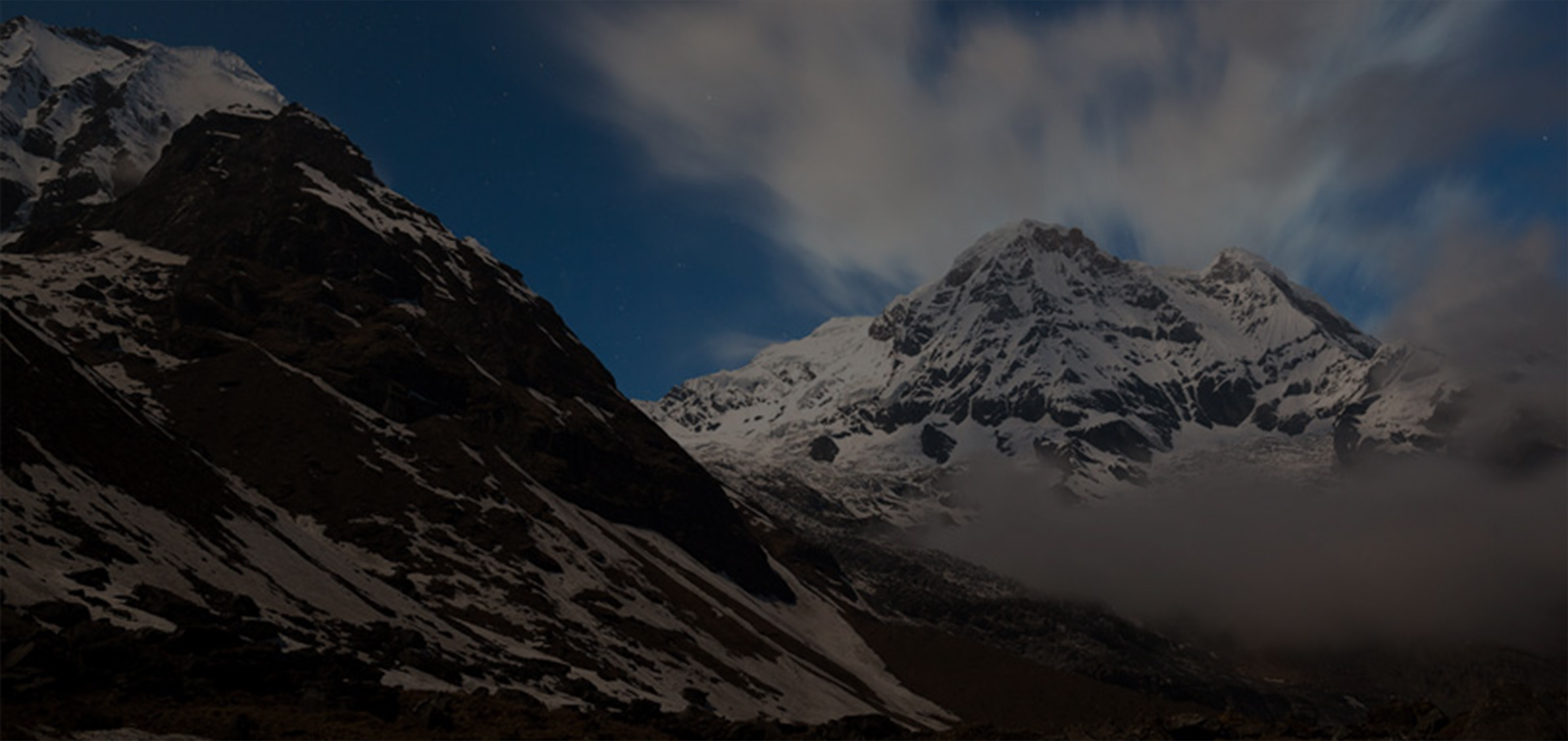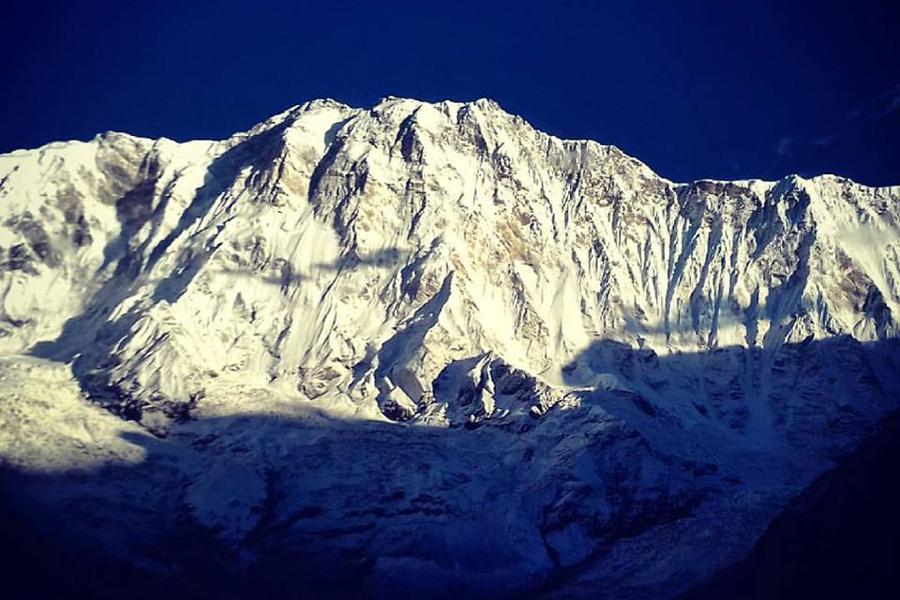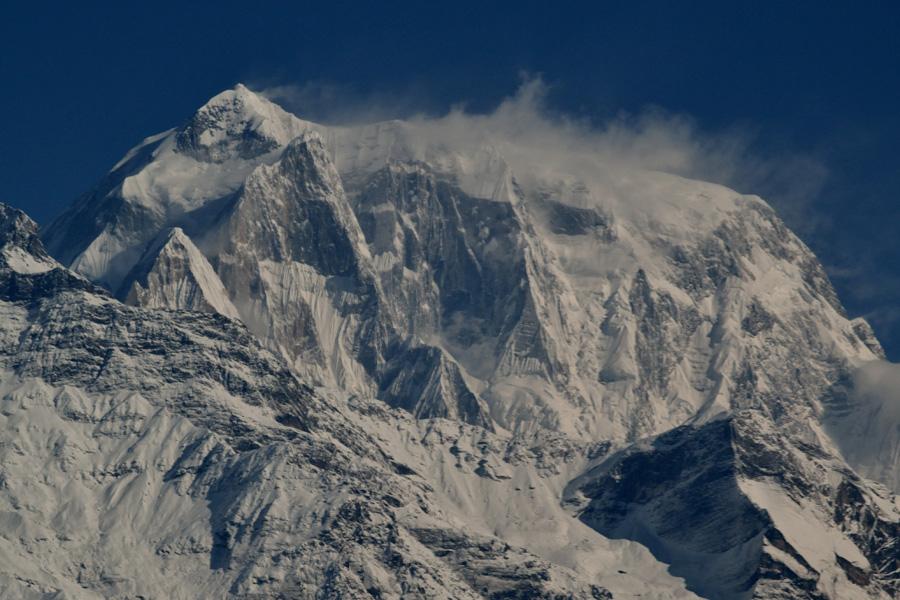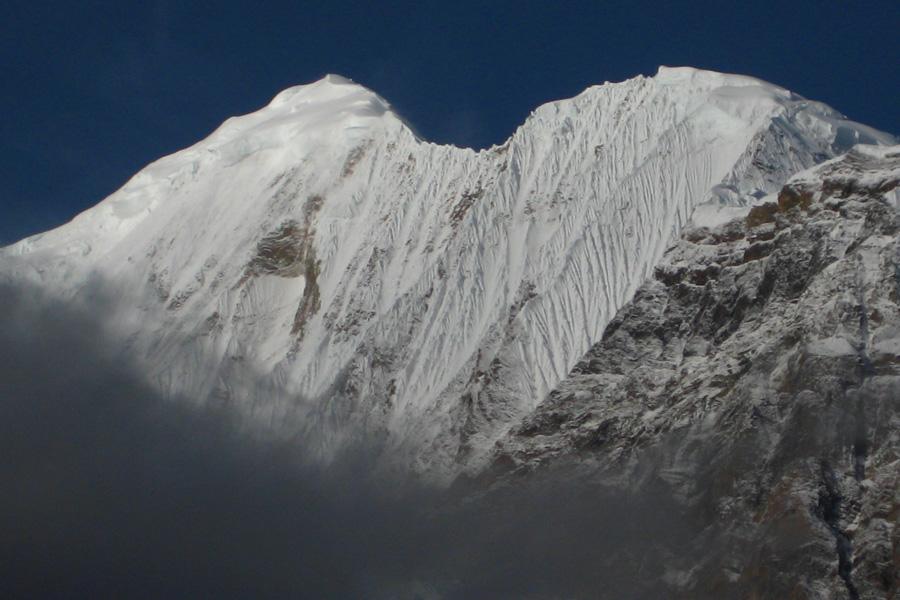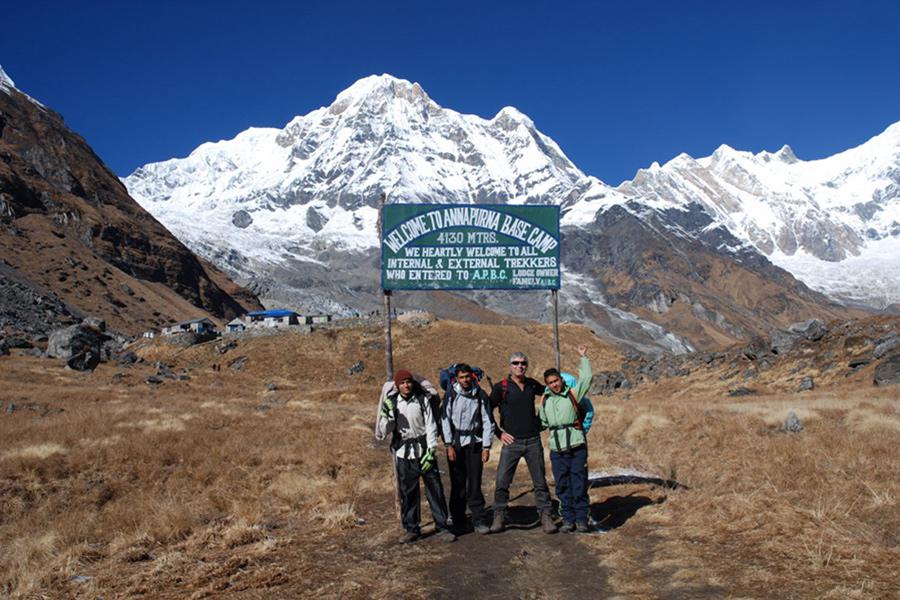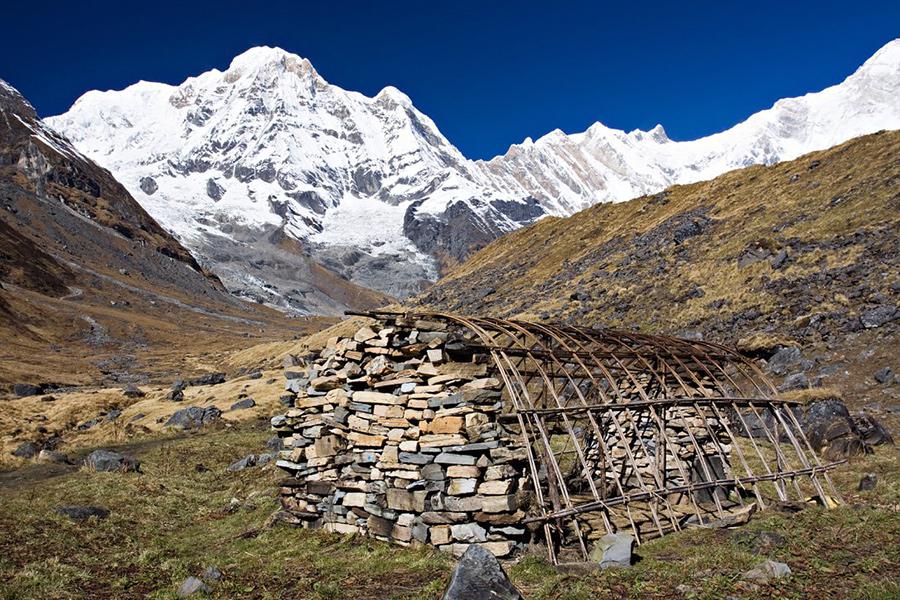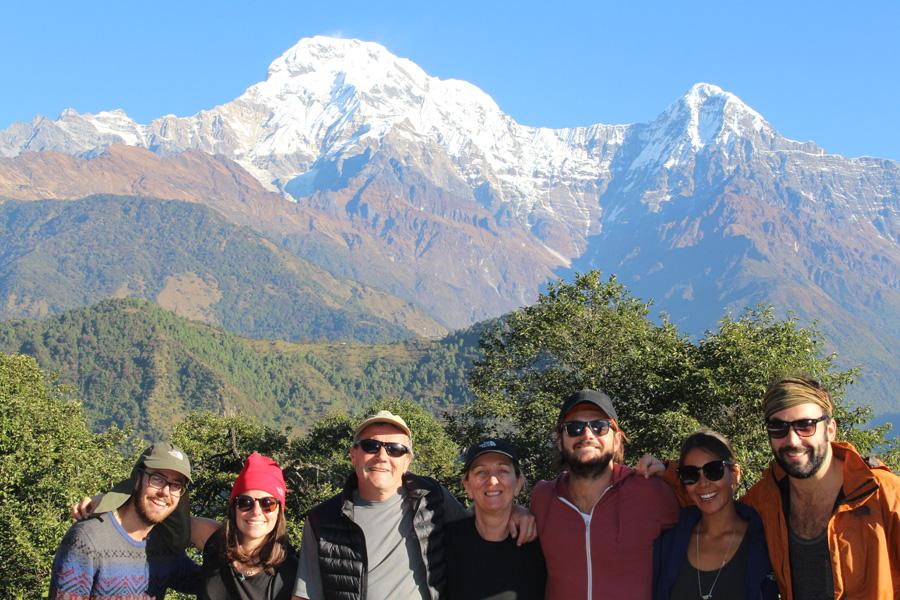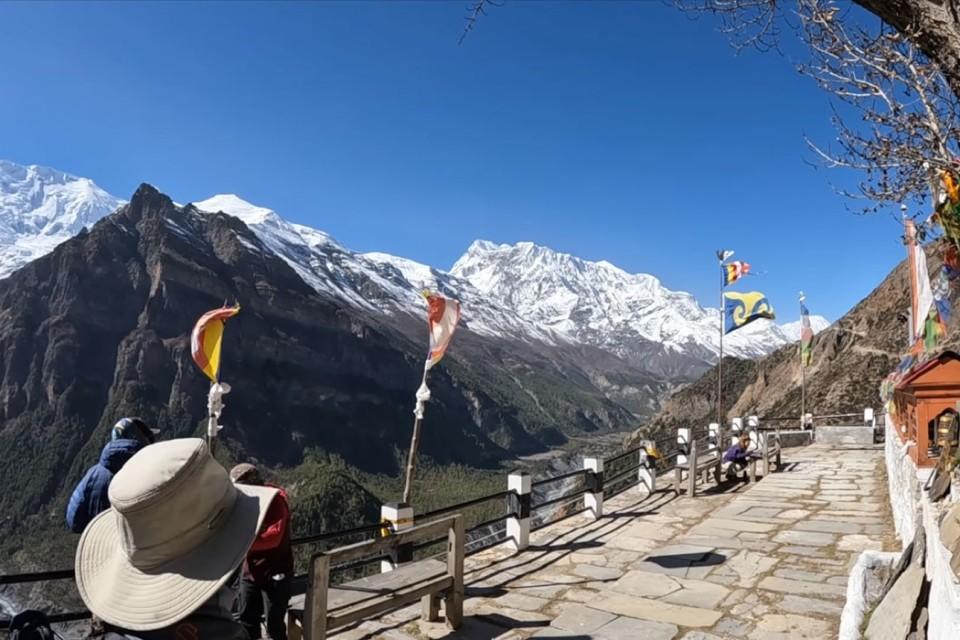Overview
The Annapurna Conservation Area (ACA) is Nepal’s largest protected region. The total area of ACA is 7,629 square kilometers. The Annapurna Conservation Area lies in the Kaski district of Nepal. It spans multiple districts, including Myagdi, Lamjung, Manag, and Mustang, but Kaski is the central district where the area is primarily located. It is a sanctuary for diverse wildlife, plants, and ecosystems. This area includes forests, grasslands, alpine meadows, and high-altitude deserts, which offers a rich variety of habitats for animals and plants. It was established in 1992, which plays a vital role in preserving the natural beauty and resources of the Annapurna region.
The Annapurna Conservation Area Nepal is home to many rare and endangered species like the snow leopard, red panda, Himalayan tahr, and musk deer. It also supports numerous bird species, including the colourful Himalayan pheasant. The conservation efforts in the Annapurna region help protect these species and their habitats, which maintains a delicate balance between wildlife and human activity. Local communities play a vital role in supporting these efforts by being involved in sustainable practices and eco-tourism.
Experiencing nature and wildlife during the Annapurna Conservation Area allows trekkers to witness the region’s beauty and biodiversity. Walking through rhododendron forests, seeing majestic mountain views, and spotting wildlife creates a deeper connection with the environment. It also raises awareness about the importance of conservation and how we can all contribute to preserving these natural treasures.
What is Annapurna Conservation Area?
The Annapurna Conservation Area (ACA) is Nepal’s largest protected area, covering over 7,600 square kilometers of diverse landscapes. It is a true gem that preserves everything from lush forests to snowy mountain peaks. The Annapurna Conservation Area Project (ACAP) plays a vital role in protecting the region’s wildlife, plants, and ecosystems. By keeping the area safe from over-exploitation, it helps maintain the balance of nature and ensures that these natural wonders are available for future generations to enjoy.
The ACA was established to protect the unique biodiversity of the region, which had been threatened by deforestation and overgrazing. Its purpose is to conserve wildlife, while the Conservation Area Management Committees (CAMCs) promote sustainable eco-tourism and work to ensure the involvement of local communities in conservation efforts. For trekkers, the Annapurna area offers an opportunity to experience the beauty and wildlife of the Annapurna region, from rare birds to untouched forests, all while supporting conservation efforts. Your trek not only deepens your connection with nature but also helps raise awareness about the importance of preserving Nepal’s natural treasures.
Wildlife in Annapurna Conservation Area
The wildlife in Annapurna Conservation Area is diverse and unique, with species adapted to the crying landscapes. Conservation efforts in the Annapurna region are focused on preserving the species and their habitats, ensuring that wildlife and local communities can thrive in harmony. Here are some species you might encounter during your trek:
- Himalayan Tahr: It is a wild goat native to the region, often seen grazing on rocky slopes. The Himalayan Tahr is an iconic species of the Annapurna area.
- Musk Deer: If you’re lucky, you might spot the elusive musk deer, quietly moving through the dense forests. It’s known for the strong scent it leaves behind. This shy animal is a rare and special sight on the trail.
- Snow Leopard: The elusive snow leopard is one of the most exciting creatures you could encounter in the ACA. If you’re fortunate enough to see one, it’s a magical moment, this powerful predator embodies the wild spirit of the region.
- Langur Monkey: In the lower regions of the trek, you’ll often come across playful grey langur monkeys. Agile and social, these lovely creatures are a fun part of the trek and add a touch of liveliness of the journey.
- Pheasants: The colourful pheasants, including the stunning Danphe (Nepal’s national bird), bring vibrant splashes of color to the forest. Their beauty adds a unique charm to the forested areas and makes the journey even more memorable.
As you trek through the Annapurna Protected Area, understanding how predators and prey work together adds to the adventure. The snow leopard, as a top predator, helps control the animal population, while animals like Himalyan tahr play a role in keeping the environment healthy. Similarly, the diverse bird species in the Annapurna region contribute to the region’s rich biodiversity. This balance is what helps the Himalayan ecosystems in Annapurna Conservation Area thrive, and seeing it in action makes you appreciate how everything is connected in this beautiful region.
Flora and Natural Beauty of The Annapurna Region
The Annapurna Conservation Area Nepal is home to a stunning variety of plants that change as you ascend through different altitudes of the Annapurna region. This area is teeming with incredible flora that adds to the magic of your trek.
- Rhododendrons: Don’t miss the burst color from these iconic flowers in spring. They light up the trails like nature’s confetti.
- Oak Forests: You’ll walk through towering oak trees that create a magical cover, which offers shade and a home for countless birds and animals.
- Bamboo Groves: These lush green areas aren’t just beautiful, they’re also where you might spot the shy red panda if you’re lucky!
- Alpine Meadows: High-altitude grasslands dotted with flowers make for stunning stops and breathtaking photos.
- Juniper and Pine: Breathe in the fresh mountain air as you walk past these tough trees that grow strong in the high-altitude area.
These plants found in the conservation area of Annapurna play a vital role in keeping the region’s biodiversity healthy. They provide food and shelter for animals, prevent soil erosion, and support water cycles. Together, they create a balanced ecosystem where wildlife can thrive.
The Role of Annapurna Region in Ecosystem Protection
The Annapurna Conservation Area (ACA) plays a vital role in protecting endangered species like the snow leopard and red panda. Through strict conservation efforts, the ACA safeguards their natural habitats, which prevents habitat destruction and poaching. The ACA also encourages responsible tourism and eco-friendly practices, which reduce harm to the environment, allowing these animals to live and grow in peace for future generations.
The conservation area of Annapurna plays a vital role in ecosystem protection:
- Protecting Endangered Species: The ACA helps protect rare animals like the snow leopard and red panda by preserving their natural habitats. As you trek, you'll experience the region’s rich flora and fauna, from vibrant rhododendron forests to alpine meadows, all contributing to the area's diverse ecosystem and enhancing your connection with nature.
- Community Involvement: Local communities are main players in conservation. They embrace sustainable practices and welcome trekkers with ecotourism opportunities that benefit both nature and the people.
- Tourism for Conservation: Every step you take in the ACA helps fund efforts to protect the wildlife and environment. Your visit not only supports conservation but also raises awareness about the importance of preserving natural treasures.
- Preventing Habitat Destruction: The ACA has strict rules to protect the land. By preventing deforestation and overgrazing, the area ensures that the stunning landscapes and wildlife remain for future trekkers like you.
- Fighting Poaching: Thanks to anti-poaching measures, endangered species in the ACA are safeguarded from illegal hunting. By trekking here, you’re contributing to the conservation of these endangered species and helping preserve their natural habitats.
Best Spots to Experience Nature in Annapurna Area
The best spots to experience nature in the Annapurna Conservation Area includes:
- Ghandruk: It is a beautiful village where you can spot various species of birds, monkeys and even the shy red panda in the forests nearby.
- Chomrong: This is a great spot to see wildlife, including langur monkeys, pheasants, and sometimes Himalayan tahr grazing on the slopes.
- Bamboo: A peaceful location where you can often spot red pandas and other small mammals hidden in the bamboo groves.
- Deurali: As you trek higher, keep an eye out for the musk deer and Himalayan tahr in the alpine meadows.
- Annapurna Base Camp: While it’s known for its stunning mountain views, it’s also a good place to spot birds, including the Himalayan pheasant.
- Ghorepani Poon Hill: It offers stunning views of the Himalayas and takes you through dense rhododendron forests. It’s a great spot for birdwatching and appreciating the flora of the region.
Permits for Annapurna Conservation Area
To enter the conservation area of Annapurna, you need to purchase a Conservation Area Entry Permit (CAEP), which is mandatory for all trekkers. The permit helps fund conservation efforts in the region.
1. Annapurna Conservation Area Entry Permit
- Cost:
- Foreigners: NPR 3,000
- SAARC Nationals: NPR 1,000
- Nepali Nationals: Free
- Where to buy:
- You can obtain the permit in Kathmandu at the ACAP office (Annapurna Conservation Area Project) or in Pokhara at the Trekking Agencies’ Association of Nepal (TAAN) office.
- The permit is valid for 1 month but can be extended if necessary (for an additional fee).
2. TIMS Card (Trekkers’ information Management System Card)
- You may also need a TIMS Card, which is required for most trekking routes in Nepal.
- Cost:
- Foreigner: NPR 2,000
- SAARC Nationals: NPR 1,000
- Nepali Nationals: Free
- The TIMS Card can be obtained from the Nepal Tourism Board (NTB) office in Kathmandu or Pokhara.
Environmental Challenges in Annapurna Conservation Area
The Annapurna Conservation Area (ACA) is a special place with many different plants and animals. The weather in Annapurna region varies depending on the season and the altitude. But climate change is causing big problems here, which upsets the balance of nature and puts many species at risk.
Effects on Wildlife in Annapurna Conservation Area
- Changes in Migration and Breeding Patterns: Changing seasons are affecting when birds and other animals migrate or breed. This can harm their populations.
- Increased risk of diseases: Warmer weather helps spread diseases that can harm wildlife.
- Habitat Destruction and Separation: Warmer temperatures and changing rainfall are making animals move to new areas. This breaks up their habitats and forces them to compete with other species.
Effects on Flora and Fauna in Annapurna Conservation Area
- Loss of Biodiversity: Some plants can’t adapt fast enough to the changing climate, which leads to fewer types of plants.
- Changes in the timing of nature: Climate change is changing when plants flower and produce fruits, which can upset the balance between plants and the animals that depend on them.
- Shifting vegetation zones: As it gets warmer, plants are moving to higher altitudes. This puts local plants at risk as new plants take over.
Importance of Sustainable Trekking Practices
Sustainable trekking practices are key to protect the Annapurna region's plants and animals. Bad trekking habits can make climate change effects worse, destroy habitats, and harm the area’s natural balance.
Why Does Sustainable Trekking Matters?
- Minimizing Environmental Impact: Managing waste properly, using fewer resources, and trekking responsibly help protect the environment.
- Preserving Cultural Heritage: Sustainable practices respect and protect the local culture.
- Supporting Conservation Efforts: Money from eco-friendly trekking can support projects to protect nature and help local communities.
- Preserves Local Culture: Responsible trekking supports local communities by respecting their traditions and contributing to eco-tourism, helping them maintain their life.
- Protects Nature and Wildlife: Sustainable trekking helps preserve the natural beauty of the area and ensures that wildlife, like snow leopards and red pandas, can thrive without harm.
Sustainable trekking in Annapurna supports sustainable development by preserving the environment, protecting wildlife, and benefiting local communities. This approach ensures that the region remains beautiful and accessible for future generations.
How Trekkers Can Contribute to Annapurna Conservation Area?
- Follow Leave-No-Trace Principles: Take all your waste with you, including biodegradable items, and dispose of them properly in waste bins to keep the trails clean.
- Use Eco-Friendly Products: Use biodegradable soaps and detergents to minimize your impact on nature during your trek.
- Reduce Plastic Waste: Bring a reusable water bottle to cut down on single-use plastics and protect the environment.
- Community-Based Conservation: Stay in charming local tea houses and buy handmade products to help support the community you’re exploring.
- Stay to Existing trails: Don’t create new paths that can harm the soil and plants—stay on marked routes to preserve the natural environment.
- Join Conservation Activities: Help in tree planting activities or support local groups working hard to protect the beautiful nature around you. Your efforts can help preserve these stunning landscapes for future generations.
Practical Tips for Enjoying the Nature and Wildlife on the Trek
- Stay Quiet and Respectful: Keep noise low so you don’t disturb animals. This lets you enjoy watching them up close without scaling them away.
- Bring Binoculars: A pair of binoculars lets you see animals from a safe distance and enjoy the wildlife even more.
- Stick to the Marked Trails: Always stay on marked paths to protect plants and animals, and help keep the environment safe and beautiful.
- Don’t Feed the Animal: Feeding wildlife can disrupt their natural behaviour and diet. It’s best to observe them from afar and let them remain in their natural state.
- Respect Wildlife’s Space: If you spot an animal, keep your distance and avoid getting too close. Respect their territory, and remember that you’re a guest in their home.
- Bring Eco-Friendly Gear: Avoid plastics and choose eco-friendly products to reduce your impact on nature. Leave no trace and help protect the environment.
- Stay Safe and Prepared: Keep your safety in mind while exploring nature. Carry enough water, wear appropriate clothing, and follow the advice of guides to ensure a safe and enjoyable trek.
- Take Your Time: Don’t rush. Slow down and take in the beauty of nature. Enjoy the moment and all the amazing sights around you.
How the Annapurna Conservation Area Enhances Your Trekking Experience
The Annapurna conservation Area (ACA) makes your trekking experience special in many ways:
- Amazing Views: ACA offers some of the best views in Nepal, with beautiful mountains, green forests, and peaceful valleys. Every part of the trek has stunning stunning scenery that makes the journey unforgettable.
- Wildlife and Nature: The area is full of wildlife like the Himalayan tahr and many types of birds. You’ll also see lots of different plants and flowers along the trail, making the trek feel like a nature tour.
- Local Culture: Trekking through the ACA allows you to make yourself familiar with the rich local cultures of the Gurung and Thakali people, where you can enjoy traditional foods and learn about their way of life.
- Eco-Friendly Trekking: The conservation area focuses on sustainable tourism. The money from trekkers helps protect the environment and supports local people, so your visit helps conserve nature.
- Peaceful Atmosphere: ACA is less crowded than other trekking areas, which gives you a quiet and calm experience. You can enjoy the beauty of nature and have peaceful moments away from the busy world.
- Adventure and Challenge: If you’re looking for an adventure, ACA has tough treks like the Annapurna Circuit, which take you through high mountains and challenging trails.
The Annapurna Conservation Area makes your trek special with beautiful views, wildlife, local culture, and the chance to support nature and local people while enjoying a peaceful and adventurous experience.
Conclusion
The Annapurna Conservation Area offers an unforgettable trekking experience with breathtaking views, diverse wildlife, and rich culture. As you explore lush forests, towering peaks, and peaceful valleys, you’ll connect with nature in a way that leaves a lasting impression. The chance to spot rare animals and stunning flora makes every step of the journey feel special. At the same time, you’ll gain a deeper understanding of how vital it is to protect these beautiful places for future generations.
By trekking responsibly and supporting conservation efforts, you play an important role in preserving the ACA’s beauty. Simple actions like following eco-friendly practices, respecting wildlife, and staying on trails can help ensure that this natural paradise stays safe and thriving. Your adventure in the Annapurna Conservation Area isn’t just about trek itself, it’s about being part of a bigger effort to protect the environment and local communities. So, take your time, soak in the beauty, and enjoy knowing that your trek is making a positive impact.
Author: Samiksha Kalyan Tharu
Date: 30th December, 2024
Related Trip


